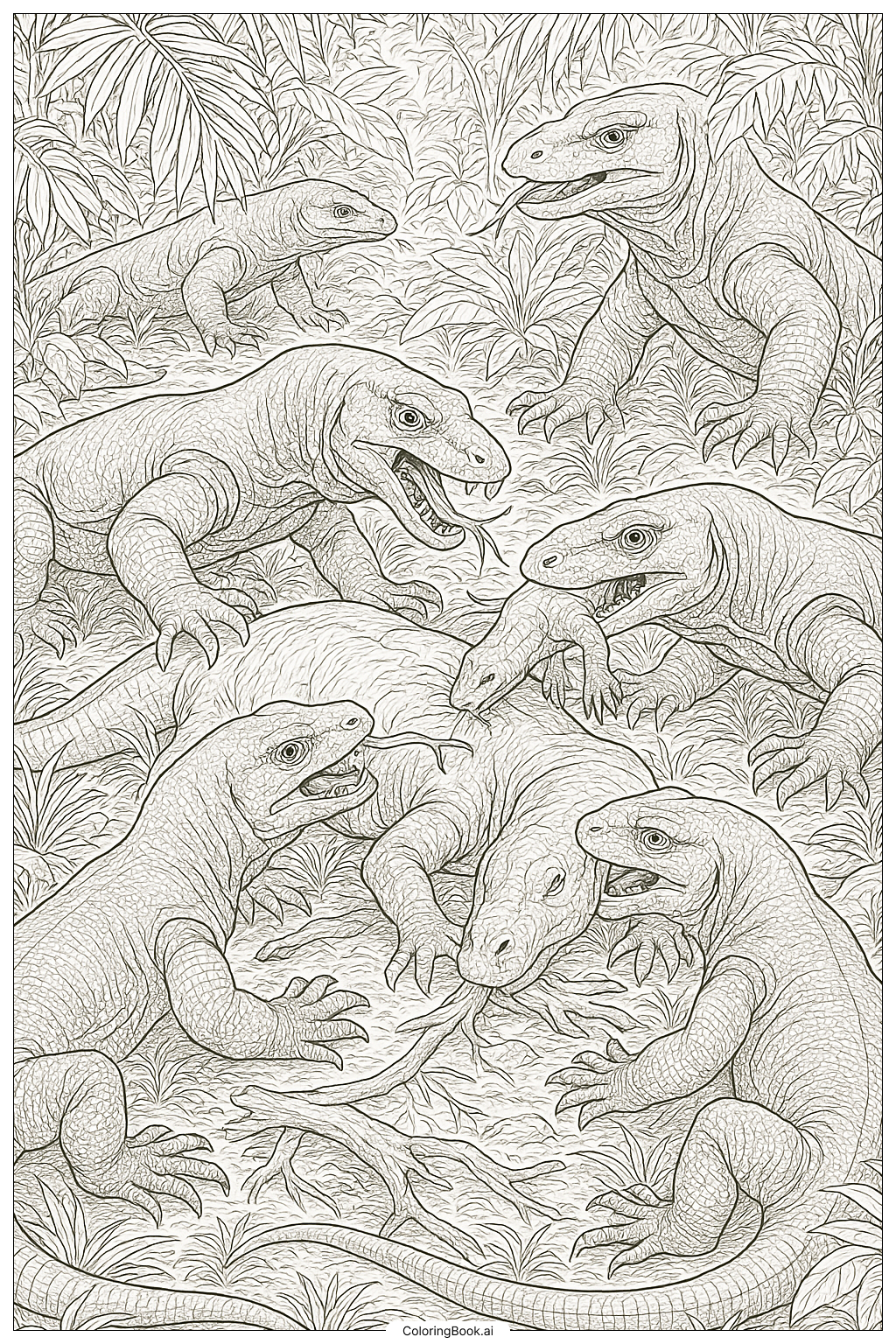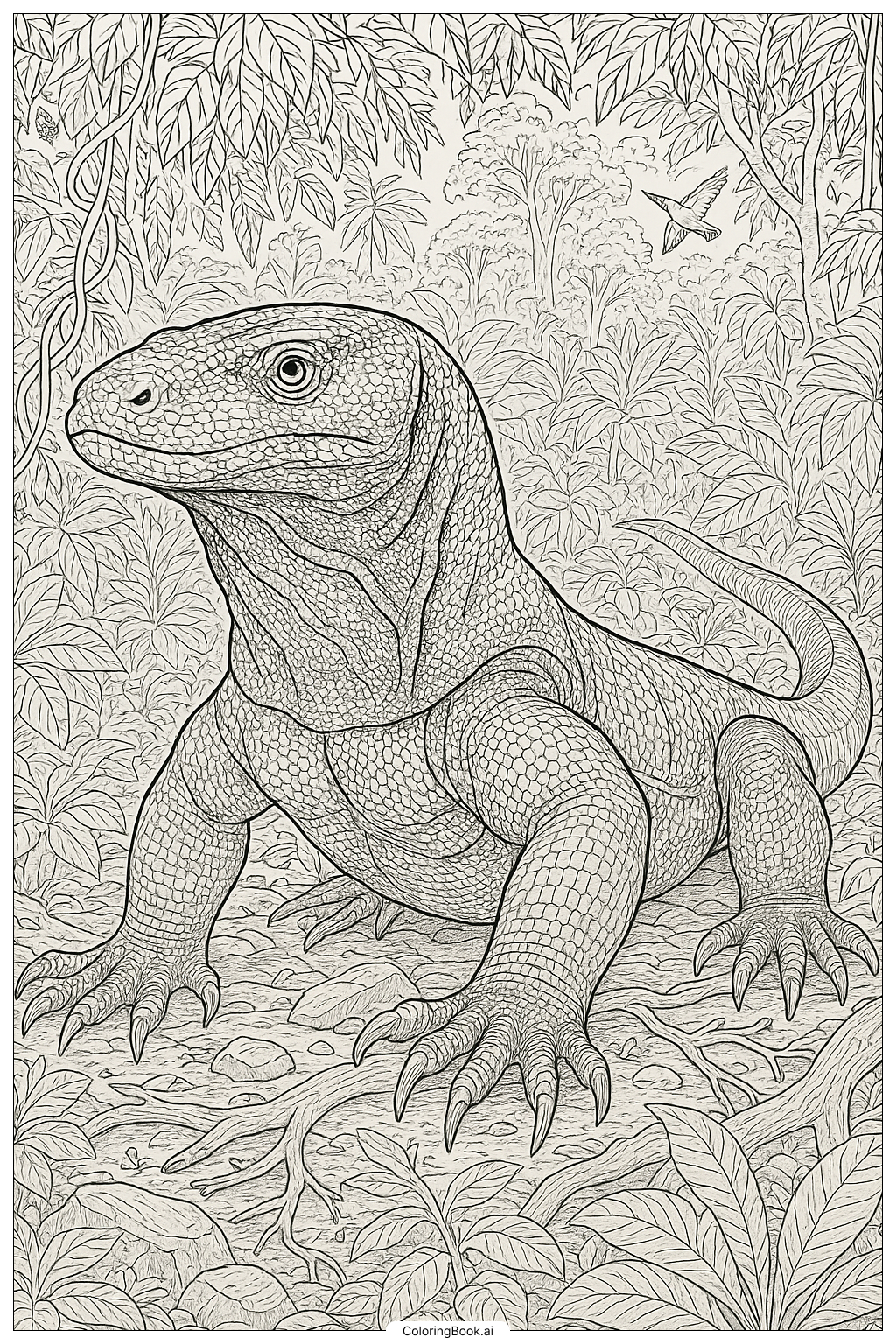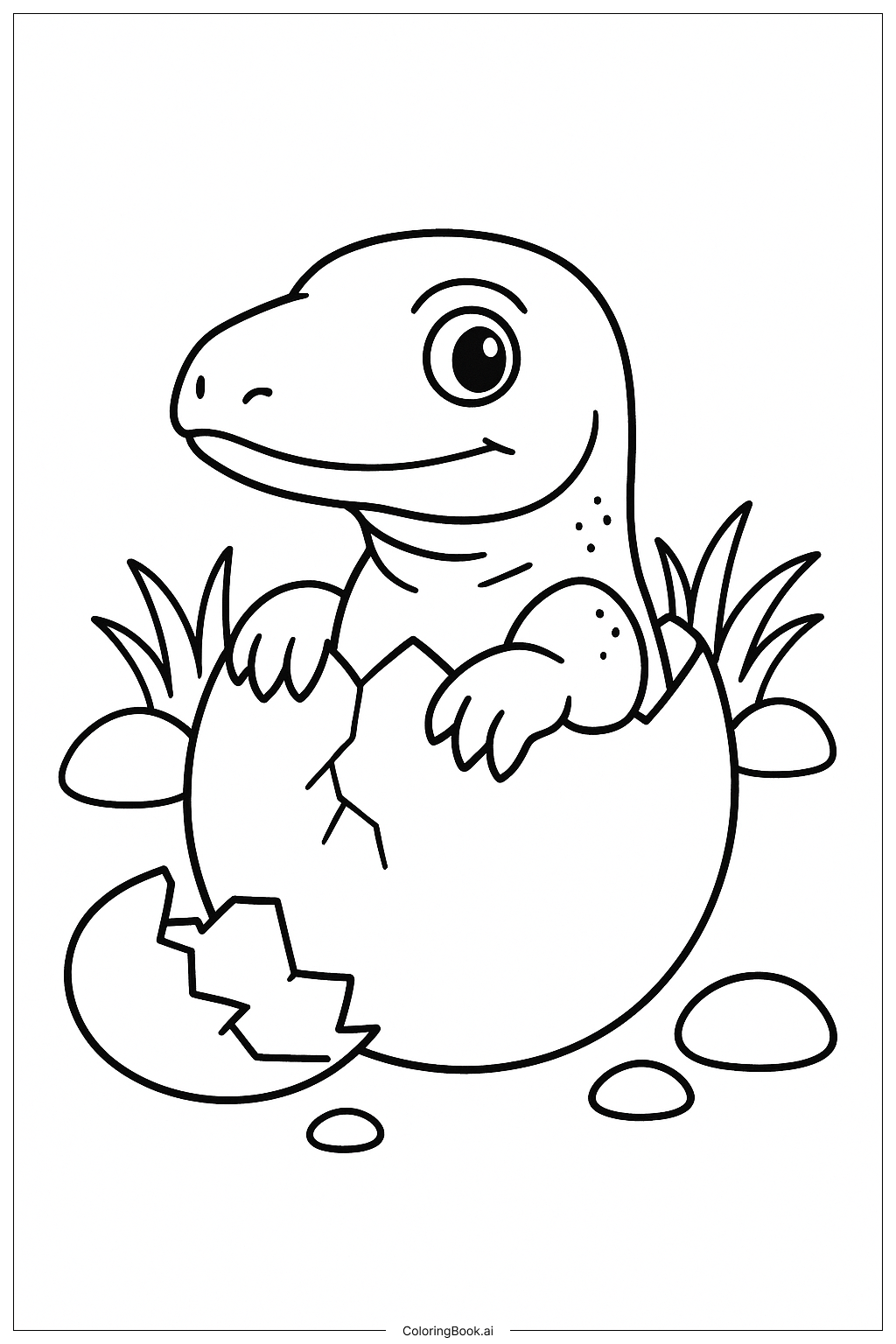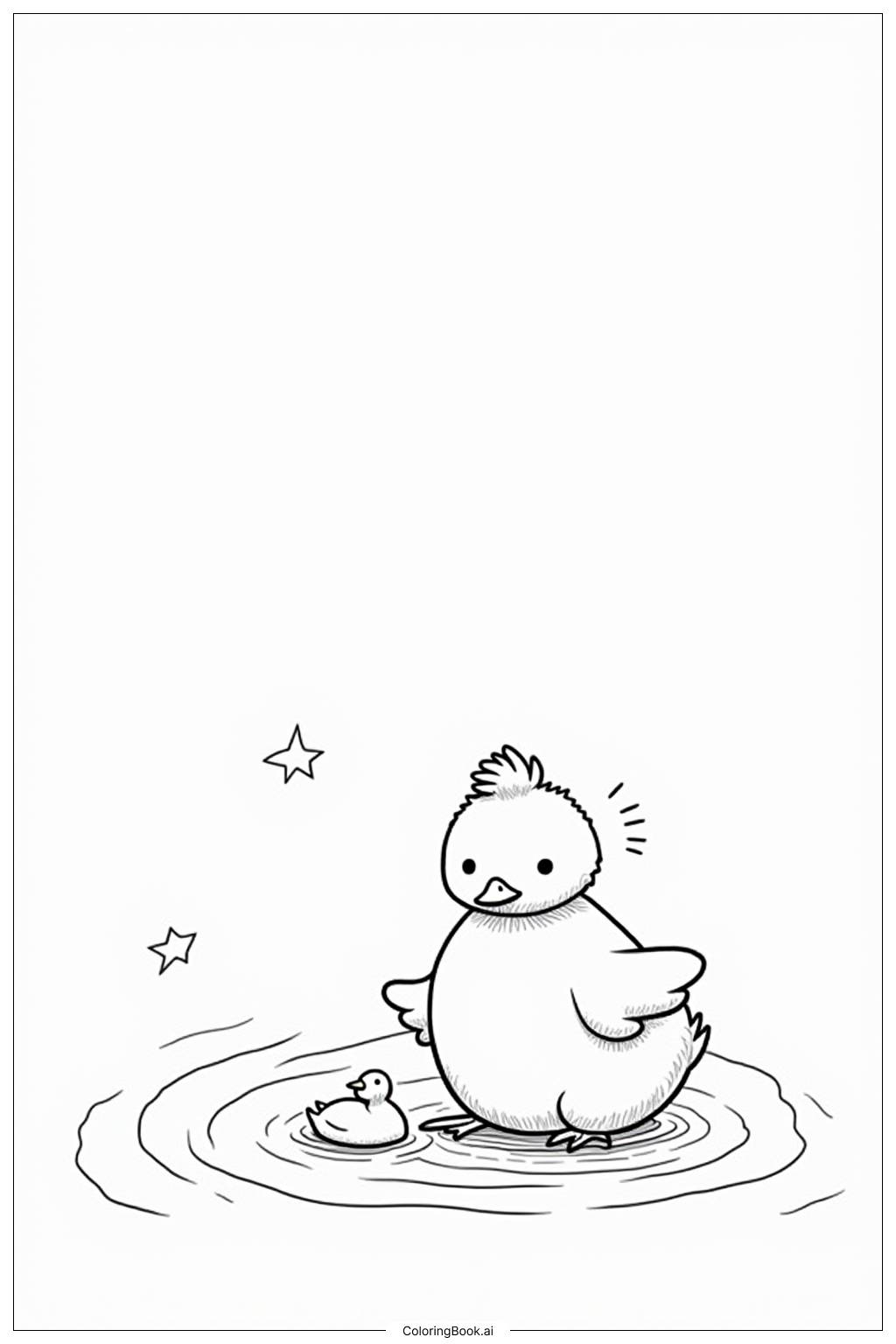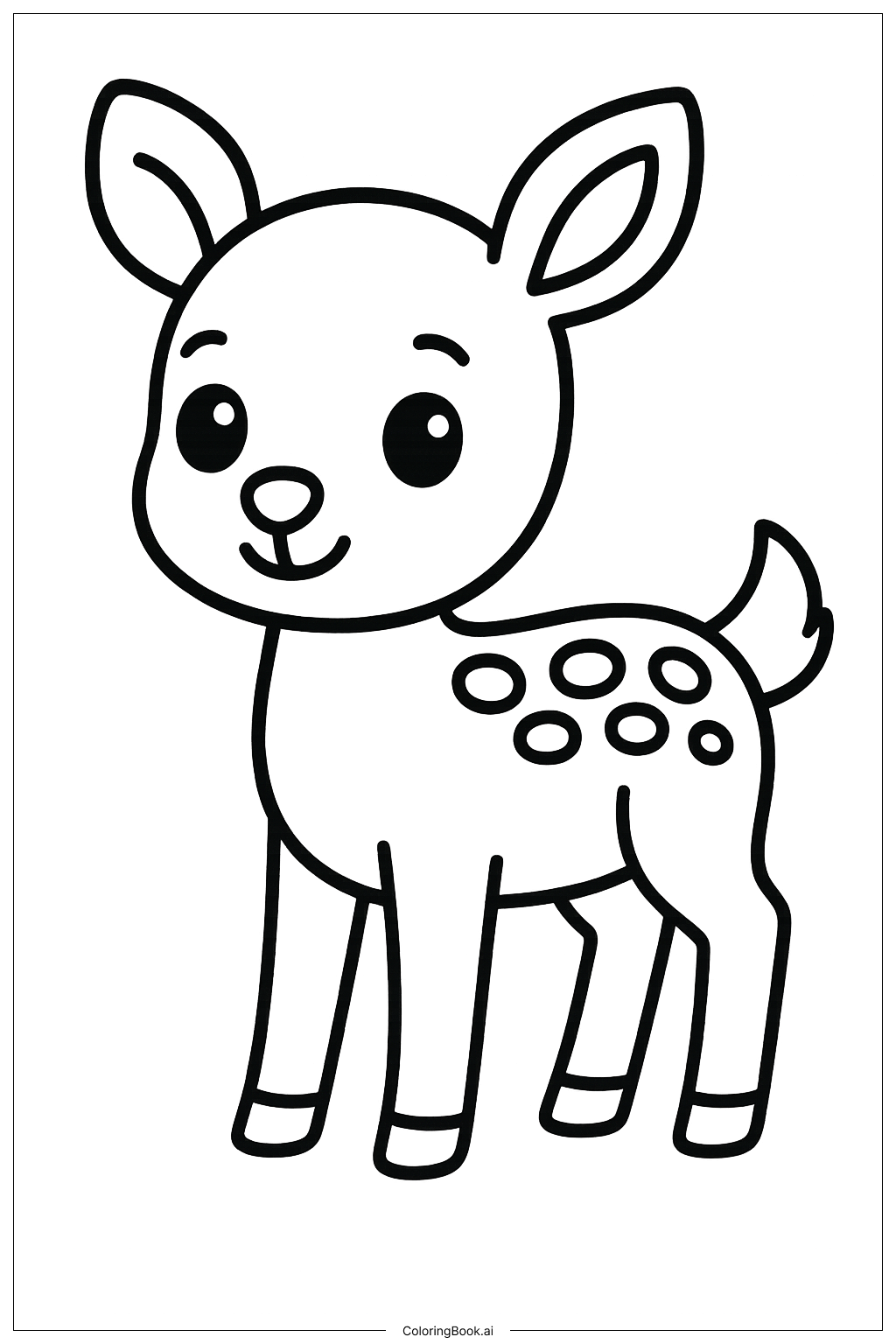Coloring tips: How to color A Group Of Komodo Dragons Feasting coloring page well?
Use earthy colors like greens, browns, and grays for the Komodo dragons to make them look realistic. For their scales, you can mix different brown and green shades to show texture. The background leaves and plants can be colored in various shades of green to create depth. Use darker colors for shadows under the dragons and lighter colors on parts where the light hits, like around their heads and backs. You can also add a bit of yellow or orange to the eyes to make them stand out. Remember to color slowly and carefully for small details like claws and tongues.
Coloring challenges: Which parts are difficult to color and need attention for A Group Of Komodo Dragons Feasting coloring page?
1. Detail over the scales: The Komodo dragons have many small scales that need careful coloring to keep the texture visible and natural. 2. Overlapping figures: The dragons’ bodies and plants overlap which makes it tricky to color each section without mixing colors or going outside the lines. 3. Background complexity: The jungle leaves and plants have many fine lines and shapes which require patience to color neatly. 4. Shadow and light: To make the picture look three-dimensional, you need to carefully add shadows and highlights, which can be challenging for beginners. 5. Small features: Coloring the dragons’ tongues, teeth, claws, and eyes needs precision because these tiny parts are important for the overall look.
Benefits of coloring books: Advantages of drawing A Group Of Komodo Dragons Feasting coloring page
Coloring this image helps improve focus and attention to detail because of the many small scales and plants. It also enhances fine motor skills as kids carefully color inside the detailed lines. This picture encourages creativity through choosing different shades and blending colors for the dragons and the jungle. Coloring a group scene teaches how to balance colors and create depth, making the learning process fun and interesting. Lastly, it helps children learn about nature and animals, sparking curiosity about wildlife.
